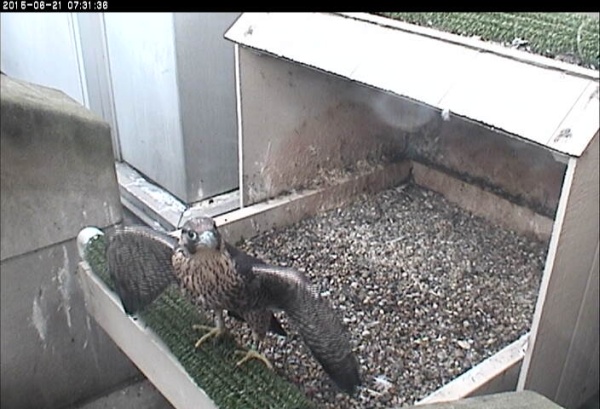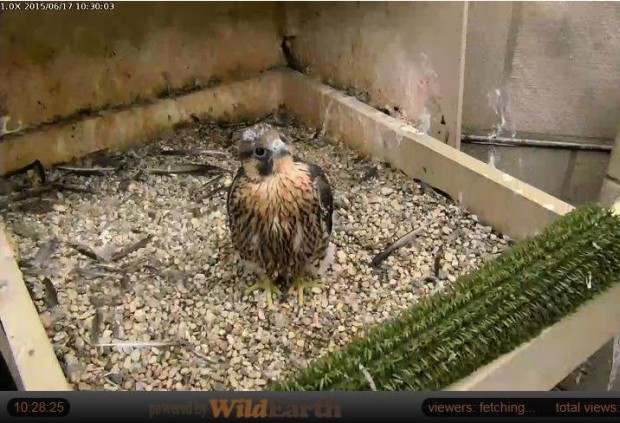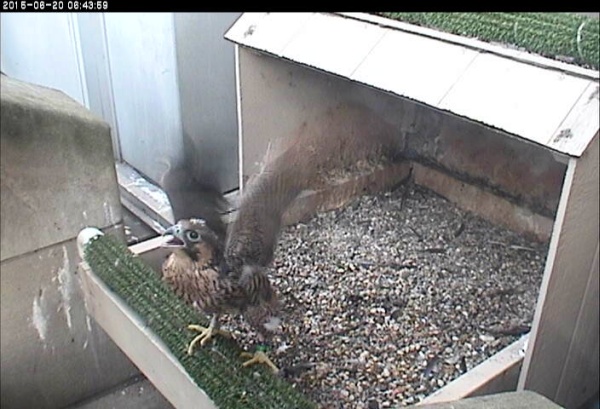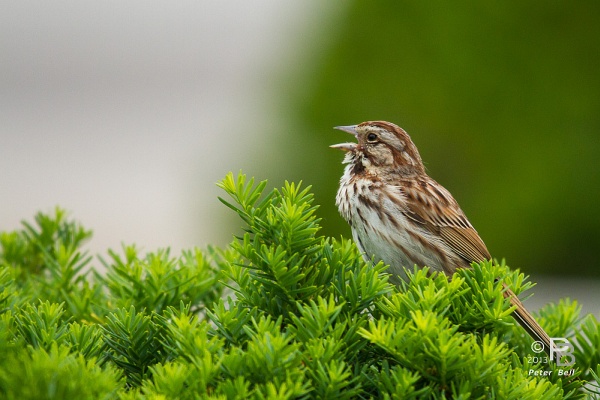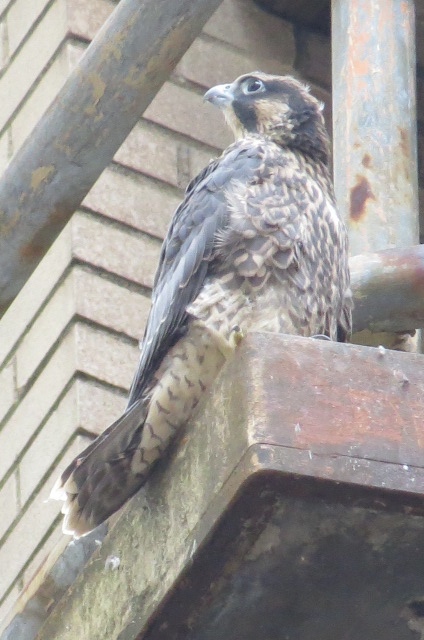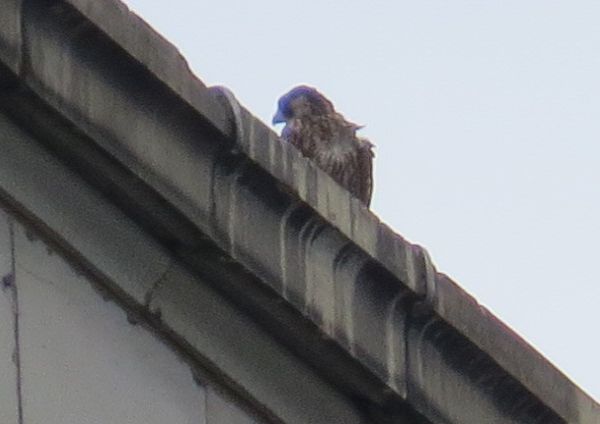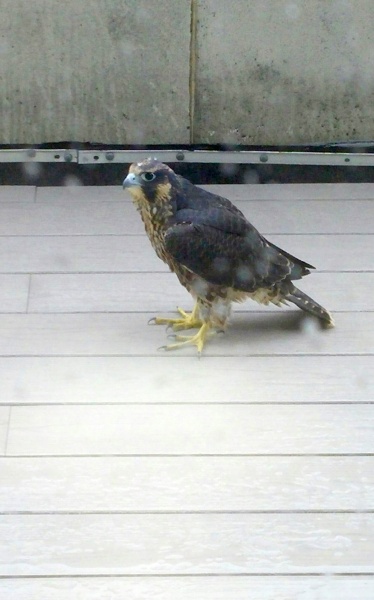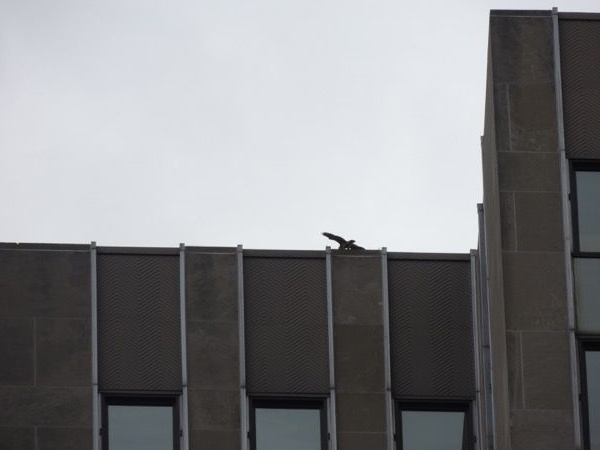
What did the Pitt peregrine chick do when he flew on Sunday June 21 and when did he do it?
Yesterday I received some photos that filled in a piece of the puzzle.
On Sunday morning Mike Meucci was on campus near Heinz Chapel when he saw two birds of prey on the lawn. The two looked like an adult and youngster but they were actually a red-tailed hawk with Silver(*), the Pitt peregrine chick. Unaware of their identity, Mike took several pictures.
The photos indicate that some time before 11:26am Silver had flown from the nest and landed with amazing accuracy in the roped off area where humans aren’t allowed to walk. In the first photo you can see Fifth Avenue, Tennyson, and Alumni Hall in the background.
A red-tailed hawk came down to see the peregrine. Notice the size difference. Peregrine falcons are indeed smaller than red-tailed hawks. And notice that their faces differ. The peregrine has a malar stripe.

Fledgling peregrines are curious, not threatening, but Dorothy and E2 beat up the campus red-tailed hawks if they dare to fly above the treetops. This hawk knows Silver’s parents well and keeps a low profile.
The red-tailed hawk scanned the sky a lot. “I hope your parents don’t see me!”

“Just thinking about peregrines makes me raise my head feathers!”

Unfazed by this encounter, Silver later walked to Heinz Chapel and climbed the steps where he was reported to and guarded by the Pitt Police.
When Fledge Watchers heard the peregrine chick was on the ground at 2:30pm we were temporarily confused because we never saw him fly. (Of course! He was on the lawn more than half an hour before we began our watch at noon.) And we wondered if the report was about a red-tailed hawk since they often stand on the ground.
Well, yes, there was a red-tailed hawk on the ground near Heinz Chapel … but that was three hours earlier.
(photos by Mike Meucci)
(*) A NOTE ABOUT THE BIRD’S NAME: If you have questions/comments about the temporary name “Silver” first read the information at these links: How peregrine chicks get temporary names and adults get permanent names, and How the name does not affect the bird’s destiny. Please be sure to read the all comments at these links — all the way back to June 1 — as well as the name comments here before posting your own comment about names. My apologies in advance, but if your comment was already asked/answered it will not be posted here.

